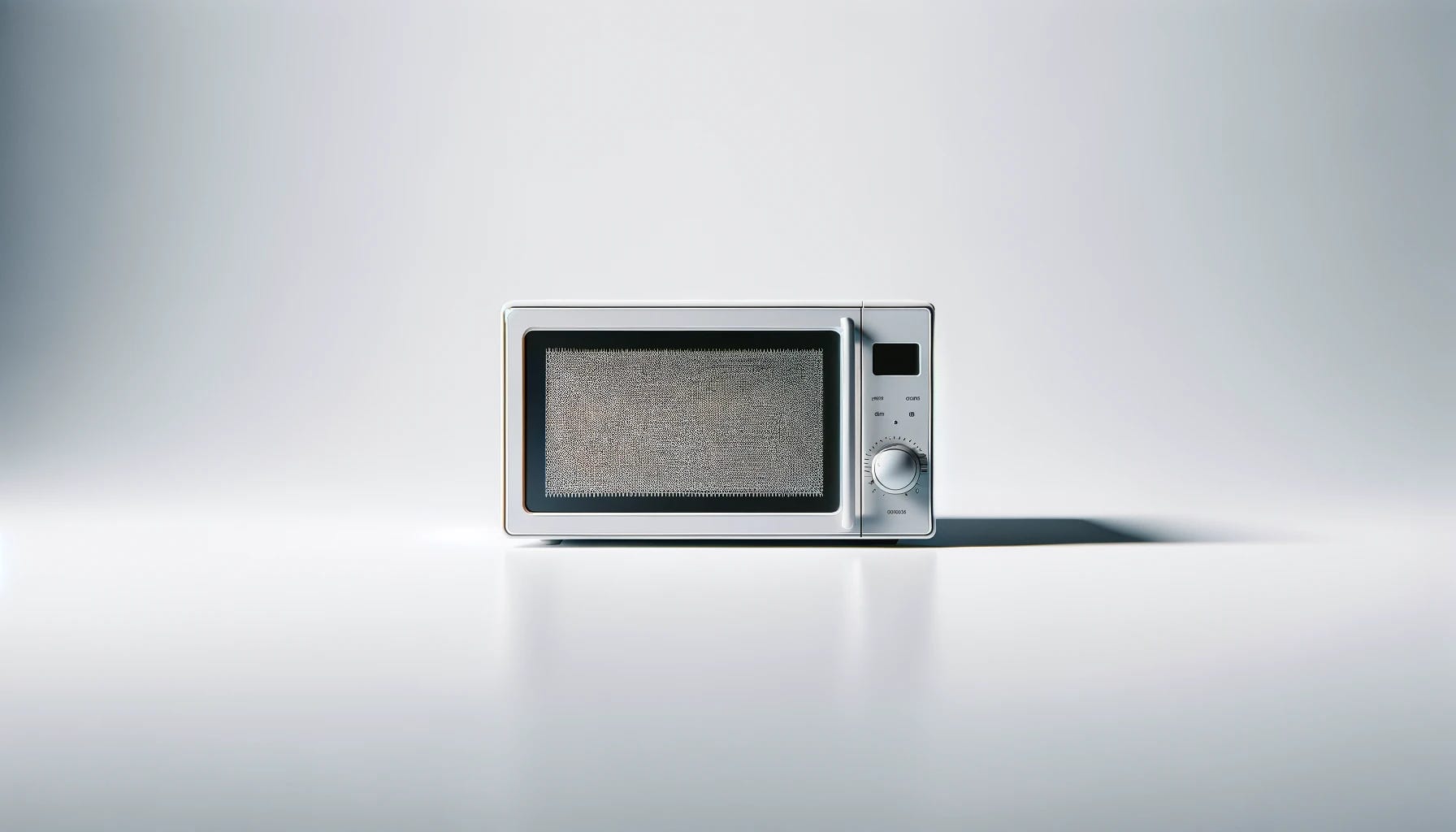When you place your face right next to the door and stare into the microwave oven through its mesh, have you ever wondered how the heat generated inside the microwave stays inside the oven?
The microwave works by producing, well, microwaves (invisible light beyond the infrared), and blasts it in the oven. These microwaves stay inside the container, but the visible yellow light from inside the oven reaches your eyes - allowing you to see the state of the food inside.

The simple reason why microwaves get locked inside the oven while visible light escapes is because microwaves have a wavelength range of 30 centimetres to 1 millimetre. While microwave ovens operate at 2.45 GHz which gives us a wavelength of around 12 cm.
The holes in the oven are around 1 to 2 millimetres. These high wavelength radiations (microwaves) cannot pass through those small holes. Visible light, on the other hand, has wavelengths of several hundreds of nano meters which makes it ~20000 times shorter (in wavelength) than microwaves. So, the visible light easily passes through the hole that is a thousand times bigger than visible light’s wavelength.
But, but, why can’t light of higher wavelength travel through a smaller hole?
As an analogy, consider a thought experiment using water waves. Create waves of different wavelengths by momentarily dipping a stone or some object. Place holes perpendicular to the surface around the dipping point. Now watch which waves were able to cross the holes and which waves are simply reflected back. The waves whose wavelengths are small enough would simply pass through the hole. While the waves whose wavelengths are larger than the hole are reflected back. For these larger waves, the other side of the hole experiences little to no effect.
Using the wavy nature of light we can explain this phenomenon. In case of the microwave with a wavelength larger than the hole, the wave cannot pass through the hole easily. Instead, it spreads out or “diffracts” significantly, preventing it from transmitting effectively through the small opening. Diffraction occurs when a wave encounters an obstacle or a slit, causing the wave to bend around the obstacle or spread out as it passes through the slit. The diffraction that occurs at the mesh holes scatters the microwaves in different directions. Because the holes are so small compared the microwaves’ wavelength, the scattered waves interfere with each other in such a way that they effectively cancel out. So, very little microwave energy can pass through the mesh, and most of it is reflected back because the mesh is made of metal.
When the microwave encounters a metal, it encounters a sea of free electrons. In metals, atoms are arranged in a crystalline lattice structure, where there is a ‘sea’ of electrons that are not attached to any specific atom. These electrons are able to freely move throughout this lattice. This sea of electrons gives the metal its conductive properties - i.e. when an electric field is applied, these electrons can move relatively easily through the metal, carrying electrical current. In the context of microwave, the microwaves encounter the metallic mesh and the electric field component of the microwave influence the free electrons, creating a current within the metal. These currents in-turn generate their own electromagnetic field, which oppose the incoming microwave radiation (Lenz’s law - the direction of induced electric current will be such that it opposes the change causing it). This opposing electromagnetic field created by the mesh metal effectively reflects the microwaves back into the oven.
But, wait a minute. Light shows dual nature - particle, and wave. Why do we consider light to be a wave here?
In most explanations, it is useful to consider high energy light radiations as particles and low energy radiations as waves. This consideration stems from the effects that are most prominent at different energy levels. At high energies, particle like properties are more prominent. The high energy photons transfer significant energy and momentum to electrons, enough to eject them. At low energies, interference, diffraction, etc., which are properties of waves, are more prominent. Here, the collective effect is considered rather than individual photon interactions. So, it’s useful to consider them as waves. Microwaves, like the name suggests, are waves and are low energy radiations. Reflection, refraction, and absorption properties are more prominent. So, in the explanations with microwaves, we use the wave nature of light as the wave effects are more prominent.
If light is a wave, just, what is doing the waving?
I’ll leave you with an intriguing note. Hope you enjoyed reading the explainer! In future articles, we’ll dive more into the nature of light in classical physics and quantum physics, from Newton’s particles to Feynman’s diagrams.



